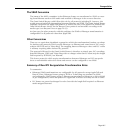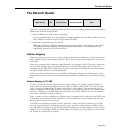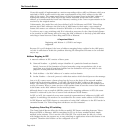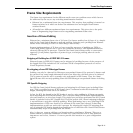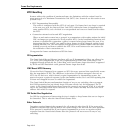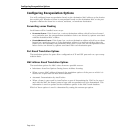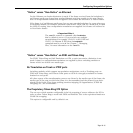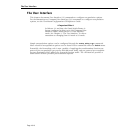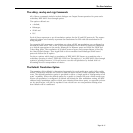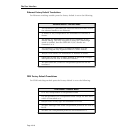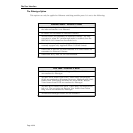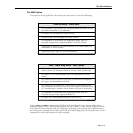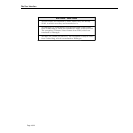
Configuring Encapsulation Options
Page 18-15
“Native” versus “Non-Native” on Ethernet
For the Ethernet one further distinction is made. If the frame received from the backplane is
an Ethernet media type frame from another Ethernet switching module in the same chassis,
then no encapsulation translations are applied. Such frames are referred to as Native frames.
If the frame is of an Ethernet media type but was put onto the backplane by some other type
of switching module, for example, the frame came from a FDDI card via a trunk port, or from
the MPX via routing, then encapsulation translations are applied. Such frames are referred to
as Non-Native frames.
♦ Important Note ♦
The
.cmd file contains a command called hreXnative
that by default is set to 1. If your switch uses multiple
encapsulations (for example, VLAN 2:1 is 802.3 IPX and
VLAN 3:1 is Ethernet II IPX) then the hreXnative
command must be set to 0. See Chapter 7, “Managing
Files,” for more information on the .cmd file.
“Native” versus “Non-Native” on FDDI and Token Ring
For FDDI, Token Ring and LAN Emulation on ATM, a native/non-native distinction is not
made. Instead, no encapsulation translations are applied by these switching modules to
frames which are of their own media type.
No Translation on Trunk or PTOP ports
Switching modules which support encapsulation mechanisms, such as Trunking ports on
FDDI and Token Ring, and Point to Point ports on ATM do not apply translation to frames
destined to such ports.
All other aspects of the transformation process are driven by the media type of the frame, the
media type of the port on which the frame is to be transmitted and the protocol type deter-
mined for the frame. Thus frame padding insertion/stripping, IP fragmentation, IP ARP bit
swapping, etc., are all automatic.
The Proprietary Token Ring IPX Option
The one area which remains configurable is the bit swapping of source addresses for IPX in
order to allow Token Ring to work with FDDI and Ethernet. This is the equivalent function to
IP ARP bit swapping.
This option is configurable and by default is on.



